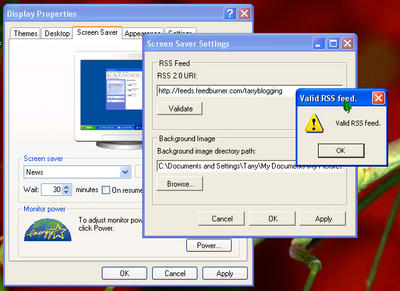Alrite ladies follow these steps to make your own screen saver. Whether you'll do it or not do it following my advice is NOT my concern. I'll set it occasionally for the heck of it for myself.
Here is a screen shot of having done it all and setting and validating my feed on the Screen Saver that we just cooked.

For whole set of print screens on setting up and running it then see it on my foto gallery here.
Steps are simple...
- download the C#Express 2005 from MSDN
- Start a project (as shown in the print screen)
- Build it
- Save it
- Go to the folder where it was saved
- Check under /bin and find the *.scr file
- Copy that file to your windows\system32 dir (if in XP)
- Select the NEWS screen saver
- Edit settings and image(s) of your choice
- And Run it
And play this AVI file to see how it works.
PS: As you can see it was a *Ready Baked code*, no development but you might want to...
o Do a mouse roll over to open a particular news directly from the screen saver, and we'll see how we can do that!
Comments
Post a Comment